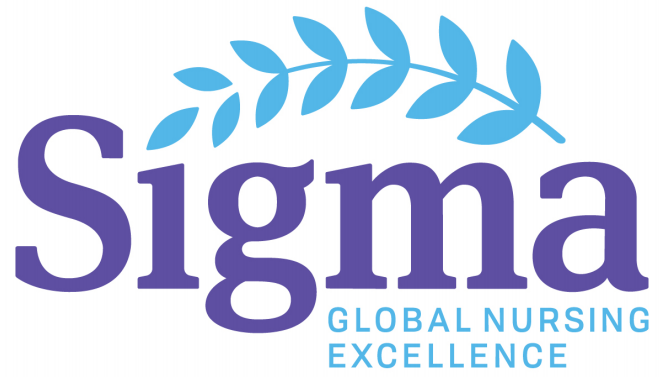Presenter Classification
Faculty
Presentation Type
Poster Presentation
Publication Date
4-14-2022
Start Date
14-4-2022 3:40 PM
End Date
14-4-2022 4:15 PM
Keywords
virtual learning flipped classroom
Abstract Type
Research
Abstract
Background: According to Park, et. al. (2021) a flipped classroom consists of pre-class activities that expose students to the subject matter, in-class activities that promote interaction between classmates, learners and instructors and post-class activities that help solidify information. This method of education is thought to be more effective at promoting clinical judgement than traditional lecture-based classrooms. Delivery of course content through virtual meetings can also allow for additional flexibility in students’ schedules, while still allowing for engagement with classmates and promoting students’ engagement in their learning and motivations to learn (Philips & O’Flaherty, 2019).
The nation-wide restrictions on 2020-2021 academic year required that all courses in the Nashville State Community College department of nursing be transitioned to an online format with mandatory weekly meetings with students via videoconference. To facilitate this transition, a flipped “virtual classroom” approach was implemented for the Medical-Surgical Nursing 2 course.
Implementation: The course operated on a weekly schedule, with a format of asynchronous lecture content, homework assignments and synchronous online meetings.
Asynchronous lecture content: asynchronous lectures were provided as 10-40 minute videos and presented in .mp4 format. The majority of students spent 2-4 hours viewing recorded lecture content.
Homework assignments: each week, students spent an average of 1-2 hours outside of the scheduled class time completing homework assignments. Homework assignments served to help students apply the course material and consisted of several short case studies, one long-form patient case study, flowcharts or concept maps.
Synchronous online meetings: synchronous online meetings were held via videoconference at a set date and time each week. Student attendance at meetings was mandatory. In synchronous online meetings the instructor reviewed the material from the homework assignments using online polling or quizzes, discussion and student feedback. Synchronous meetings were automatically recorded and provided for student review.
Evaluation:
Student learning outcomes: course outcomes for each student cohort are evaluated based on student achievement on nationally normed, standardized tests. The score designated by NSCC indicates mastery of content in the 50th percentile or higher nationwide. In two virtual semesters, 100% of students achieved the designated percentile on standardized tests. The average percentile rank was 91.8%.
Student feedback: A total of 27 students were polled via survey monkey. Student feedback was generally positive: 81% of students ranked this course format as better than online courses that contained only asynchronous lecture with no weekly meetings or outside assignments. 93% of students ranked this course format as better than online courses that contained only synchronous lecture via videoconferencing. In addition, 63% of students ranked this course format as better than fully in-person courses.
Implications:
Course outcomes were met for both virtual semesters and students responded positively to the course format. This suggests that the virtual flipped classroom approach can be used to achieve student learning outcomes.
Included in
Implementing a Flipped Classroom Approach in an Online Medical-Surgical Nursing Course
Background: According to Park, et. al. (2021) a flipped classroom consists of pre-class activities that expose students to the subject matter, in-class activities that promote interaction between classmates, learners and instructors and post-class activities that help solidify information. This method of education is thought to be more effective at promoting clinical judgement than traditional lecture-based classrooms. Delivery of course content through virtual meetings can also allow for additional flexibility in students’ schedules, while still allowing for engagement with classmates and promoting students’ engagement in their learning and motivations to learn (Philips & O’Flaherty, 2019).
The nation-wide restrictions on 2020-2021 academic year required that all courses in the Nashville State Community College department of nursing be transitioned to an online format with mandatory weekly meetings with students via videoconference. To facilitate this transition, a flipped “virtual classroom” approach was implemented for the Medical-Surgical Nursing 2 course.
Implementation: The course operated on a weekly schedule, with a format of asynchronous lecture content, homework assignments and synchronous online meetings.
Asynchronous lecture content: asynchronous lectures were provided as 10-40 minute videos and presented in .mp4 format. The majority of students spent 2-4 hours viewing recorded lecture content.
Homework assignments: each week, students spent an average of 1-2 hours outside of the scheduled class time completing homework assignments. Homework assignments served to help students apply the course material and consisted of several short case studies, one long-form patient case study, flowcharts or concept maps.
Synchronous online meetings: synchronous online meetings were held via videoconference at a set date and time each week. Student attendance at meetings was mandatory. In synchronous online meetings the instructor reviewed the material from the homework assignments using online polling or quizzes, discussion and student feedback. Synchronous meetings were automatically recorded and provided for student review.
Evaluation:
Student learning outcomes: course outcomes for each student cohort are evaluated based on student achievement on nationally normed, standardized tests. The score designated by NSCC indicates mastery of content in the 50th percentile or higher nationwide. In two virtual semesters, 100% of students achieved the designated percentile on standardized tests. The average percentile rank was 91.8%.
Student feedback: A total of 27 students were polled via survey monkey. Student feedback was generally positive: 81% of students ranked this course format as better than online courses that contained only asynchronous lecture with no weekly meetings or outside assignments. 93% of students ranked this course format as better than online courses that contained only synchronous lecture via videoconferencing. In addition, 63% of students ranked this course format as better than fully in-person courses.
Implications:
Course outcomes were met for both virtual semesters and students responded positively to the course format. This suggests that the virtual flipped classroom approach can be used to achieve student learning outcomes.

